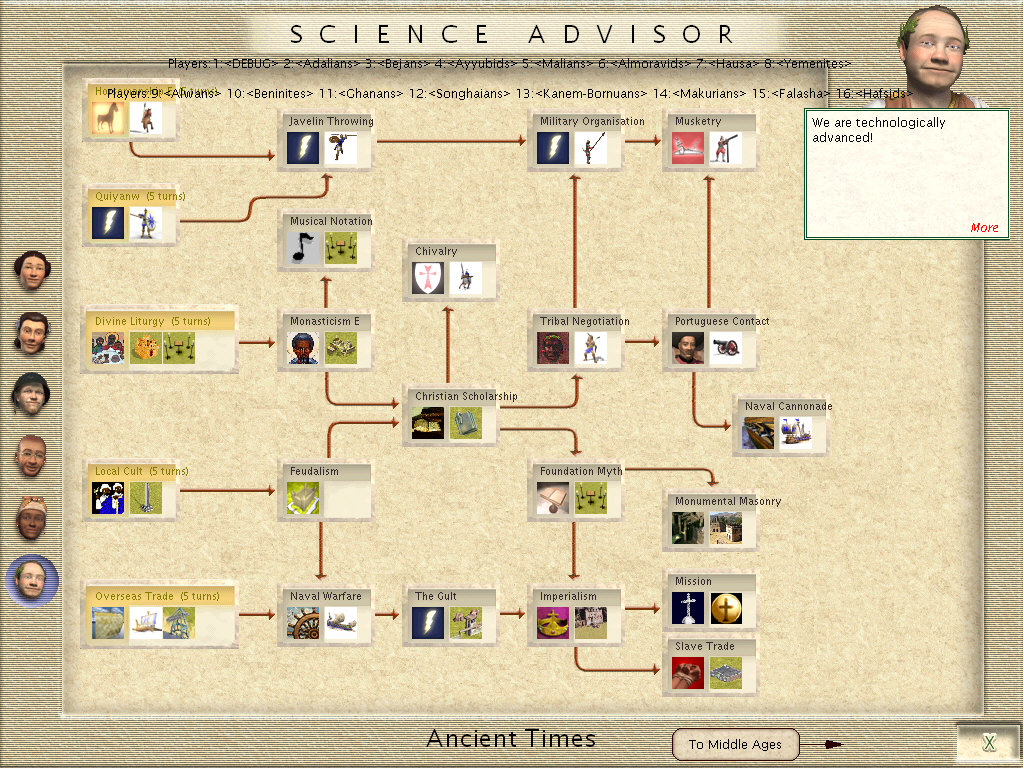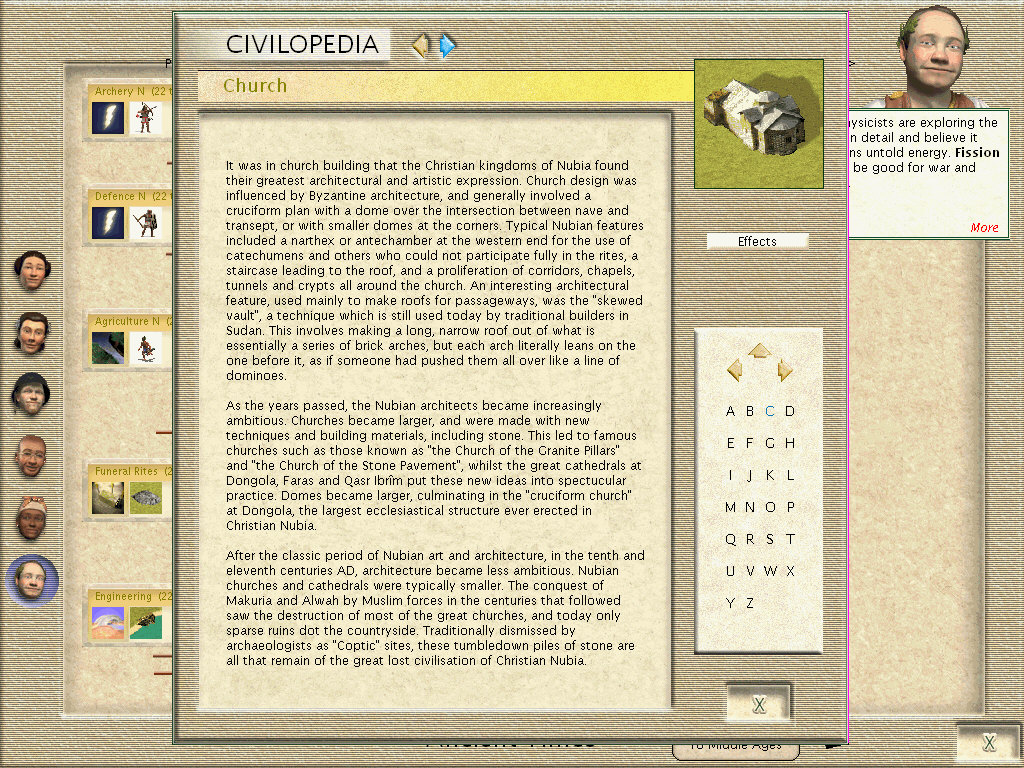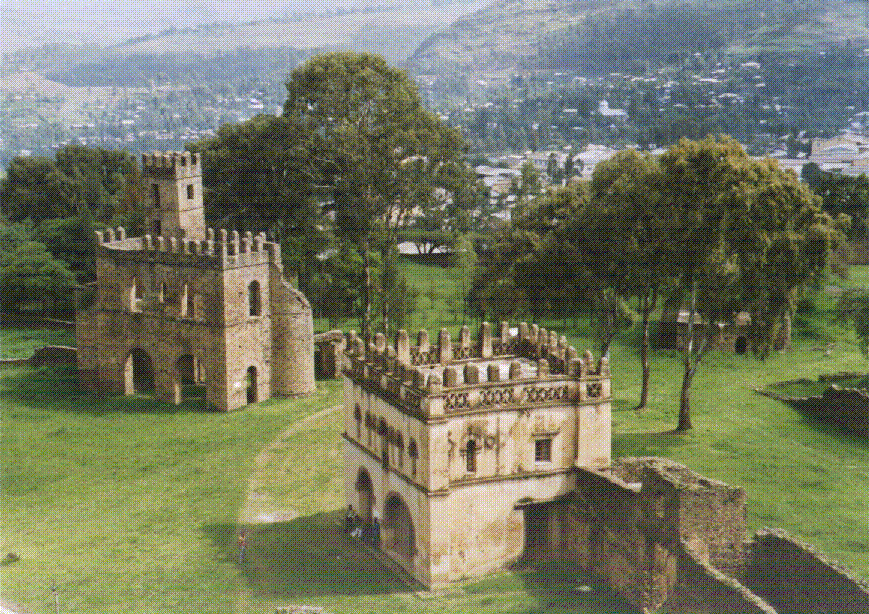I decided it was about time to give some details of this forthcoming scenario. Its a pretty ambitious one far more complex than my last so its bound to benefit from some general input!
This scenario is set in North Africa between the years AD 1000 and AD 1500 a time and place that doesnt feature strongly in Civ to date! I hope this scenario will go some way to redressing the imbalance.
This was an interesting and important period of history. Great empires appeared, flourished and vanished again like flowers in the field. Powerful leaders struggled for control of land, of resources, of the peoples affections, and most of all for the all-important trade routes. Resources in Africa are sparse and scattered, and great civilisations have only ever arisen there by trading. Control the trade routes, and you can become rich and powerful. Lose them to your rivals, and you will wither. There are some great stories to tell from this period and I hope that this scenario will be as evocative of them as possible.
In this scenario, the player can take control of one of eight different civilisations Ghana, Mali, Songhai, Kanem-Bornu, Makuria, Alwah, Ethiopia and the Falasha. There are a lot of new ideas and tweaks in this one that I don't think we have seen before, but the biggest twist is that different civilisations have different tech trees! In fact there are five distinct tech trees, each of which is wholly unique: that is, there are NO shared techs between the different trees (although there are a few duplicates). This means that that the Science Adviser screen will look different depending on which faction you are playing.
The factions are divided into the five tech trees like this:
West African Ghana, Mali, Songhai (and non-playable Benin)
Central African Kanem-Bornu (and non-playable Hausa)
Nubian Makuria, Alwah
Ethiopian Ethiopia
Falasha Falasha
There is also a sixth tech grouping, but it contains only dummy techs, because all the civilisations in it are non-playable. They are
Arabian Almoravids, Hafsids, Ayyubids, Bejans, Adal, Yemen
To see how the unique tech tree is done and some of the issues it raises, have a look at http://forums.civfanatics.com/showthread.php?t=102803 which also explains why this system necessitates setting the scenario in a single era only.
Having different tech trees for the different civilisations means that they also have different units, improvements, and wonders (although again there are a few duplicates). It also means that different civilisations have different routes to winning the game and different problems to overcome. It will be like having five scenarios in one!
This scenario is set in North Africa between the years AD 1000 and AD 1500 a time and place that doesnt feature strongly in Civ to date! I hope this scenario will go some way to redressing the imbalance.
This was an interesting and important period of history. Great empires appeared, flourished and vanished again like flowers in the field. Powerful leaders struggled for control of land, of resources, of the peoples affections, and most of all for the all-important trade routes. Resources in Africa are sparse and scattered, and great civilisations have only ever arisen there by trading. Control the trade routes, and you can become rich and powerful. Lose them to your rivals, and you will wither. There are some great stories to tell from this period and I hope that this scenario will be as evocative of them as possible.
In this scenario, the player can take control of one of eight different civilisations Ghana, Mali, Songhai, Kanem-Bornu, Makuria, Alwah, Ethiopia and the Falasha. There are a lot of new ideas and tweaks in this one that I don't think we have seen before, but the biggest twist is that different civilisations have different tech trees! In fact there are five distinct tech trees, each of which is wholly unique: that is, there are NO shared techs between the different trees (although there are a few duplicates). This means that that the Science Adviser screen will look different depending on which faction you are playing.
The factions are divided into the five tech trees like this:
West African Ghana, Mali, Songhai (and non-playable Benin)
Central African Kanem-Bornu (and non-playable Hausa)
Nubian Makuria, Alwah
Ethiopian Ethiopia
Falasha Falasha
There is also a sixth tech grouping, but it contains only dummy techs, because all the civilisations in it are non-playable. They are
Arabian Almoravids, Hafsids, Ayyubids, Bejans, Adal, Yemen
To see how the unique tech tree is done and some of the issues it raises, have a look at http://forums.civfanatics.com/showthread.php?t=102803 which also explains why this system necessitates setting the scenario in a single era only.
Having different tech trees for the different civilisations means that they also have different units, improvements, and wonders (although again there are a few duplicates). It also means that different civilisations have different routes to winning the game and different problems to overcome. It will be like having five scenarios in one!











